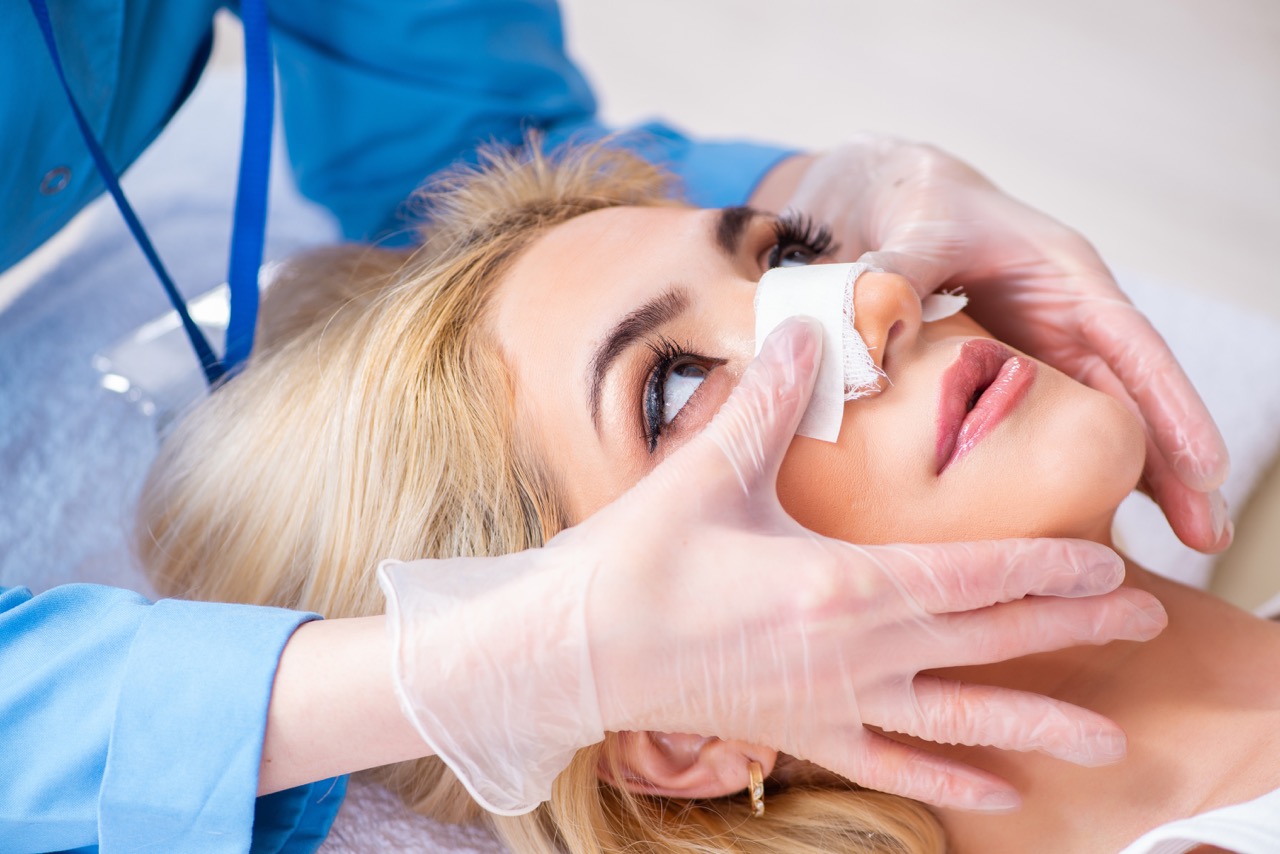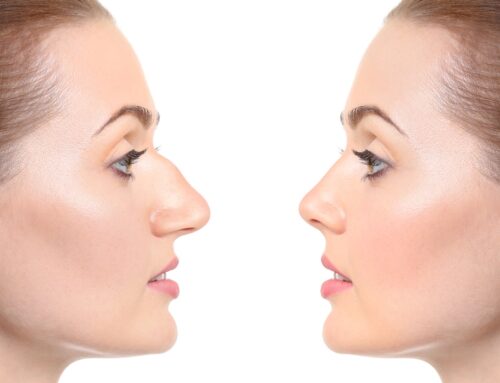Did you know there are various forms of rhinoplasty procedures? Each method offers its own type of results, ranging from temporary to permanent.
Pre-Op Expectations
Before you decide on what type of rhinoplasty is right for you, meet with Barr Aesthetics for a consultation. You’ll be walked through the rhinoplasty options offered by Dr. Barr, and what will help you achieve the results you want.
Purpose of Rhinoplasty
Some patients come to Barr Aesthetics because they have a medical need; rhinoplasty can address a deviated septum, a cleft, or nasal polyps. If a patient has suffered an injury to their nose, sometimes a procedure is desired to fix the shape and function of the nose after the fact.
Other patients come to Barr for cosmetic changes. Whether it’s the overall shape or size of the nose, rhinoplasty may be sought as a way to alter the appearance.
Whatever your reason for seeking a rhinoplasty consultation with Barr Aesthetics, you’ll work together with your doctor to determine what alterations should be made. Once you’ve made a plan, here’s how you should prepare for your rhinoplasty procedure.
THE DOS AND DON’TS BEFORE RHINOPLASTY
- Refrain from consuming alcohol in the week prior to your rhinoplasty.
- Refrain from smoking in the week prior to your rhinoplasty.
- Stay out of the sun (avoid a sunburn) in the week prior to your procedure.
- Discuss what topical creams, serums, makeup, and/or cleansers to avoid prior to your procedure.
- Stop eating at least 12 hours before your procedure.
- Get the results of blood tests such as hemoglobin levels, and your blood’s ability to clot.
- Clear your work and personal calendar for the week following your procedure.
- Stock up on groceries before your surgery; consider upping your fiber intake before and after your rhinoplasty to help with possible side effects of the anesthetic.
- Fill prescriptions in advance so they’re on hand during recovery (pain killers, anti-inflammatories, etc…).
Types of Rhinoplasty Procedures
Not all rhinoplasties are invasive in nature. There is a non-surgical option, with semi-permanent results.
Liquid Rhinoplasty
Performed with the use of fillers such as hyaluronic acid, liquid rhinoplasty offers semi-permanent results that can last up to two years. The effectiveness of the results will depend on your body’s metabolic rate; fillers are metabolized over time, making them a non-permanent option for altering the shape of one’s nose. The injections are ideal for smoothing out bumps in a nose, and they can take as few as 15 minutes to administer.
Liquid Rhinoplasty is an outpatient procedure, which means a shorter recovery time. You may experience slight bruising and discomfort at the injection site(s), but you’ll see immediate results. Traditional rhinoplasty (surgical) can require up to a year of recovery for the new nose to take its permanent shape.
Another aspect of liquid rhinoplasty that appeals to patients is its non-permanence. Hyaluronic acid can not only be metabolized naturally but if the results don’t match up to what you discussed, it can be reversed. Hyaluronic acid can be dissolved via hyaluronidase injections administered by your surgeon.
Closed Rhinoplasty
This procedure is performed while keeping the nose intact. A closed rhinoplasty is done with interior incisions in the nose; none of the skin is peeled back to provide the surgeon with access to its interior. Since the surgery is performed with access via the nostrils, it may limit what types of changes the surgeon can make. This plastic surgery is often chosen to reduce dorsal humps and narrow the bridge or tip of the nose.
For patients who want a shorter recovery period compared to that of open rhinoplasty, closed rhinoplasty is a good choice as it usually involves less swelling. Additionally, the scars may be even more imperceptible than those left by open rhinoplasty. When it comes to recovery time, patients typically need at least a week of rest after the 1- to 2-hour surgery. Like liquid rhinoplasty, closed rhinoplasty is typically an outpatient procedure.
Open Rhinoplasty
More invasive than the other rhinoplasty options, open rhinoplasty requires a longer recovery period. This type of nose job is ideal for more significant reshaping of the nose, as the surgeon has better access to the nasal cavity. To open the nose, the surgeon creates a zig-zag incision on the columella (the skin between the nostrils).
The benefits of an open rhinoplasty include more visibility for the surgeon, allowing for more flexibility when it comes to restructuring the nose. While it may produce more swelling post-op, the surgery itself is not usually any longer than closed rhinoplasty.
Post-Op Expectations
Every recovery period post-operation may vary, but there are some steps you can take to increase your comfort levels. Keeping in mind that you may not see your permanent results for up to a year (following surgical rhinoplasty) is important for patients’ morale. Remember that it will take time for you to find confidence in your nose post-op.
THE DOS AND DON’TS AFTER RHINOPLASTY
- Take at least a week off from school or work.
- Sleep with your head elevated to reduce swelling.
- Keep your nose/face iced to reduce swelling.
- Stay hydrated to reduce swelling.
- Stay consistent with pain relief (whether over-the-counter or prescribed).
- Clean the inside of your nose as instructed.
- Refrain from physical activity for at least two weeks following surgery.
- Refrain from sun exposure (avoid sunburn) following surgery to reduce swelling.
- Refrain from consuming alcohol in the weeks immediately following your procedure.
- Refrain from smoking in the weeks immediately following your procedure.
- Refrain from blowing your nose for at least three weeks following surgery.
- Stay away from blood thinners (such as ibuprofen and aspirin) for at least two weeks.
If Barr Aesthetics can help you learn more about rhinoplasty, please contact us via 801-532-0204, or online.







